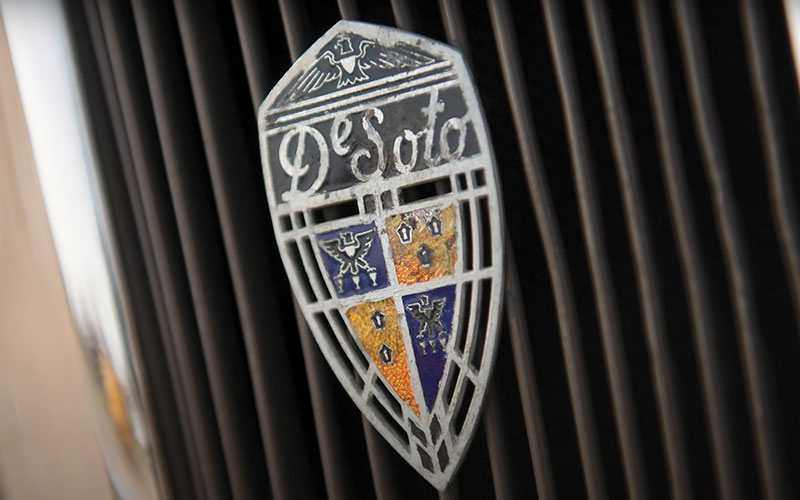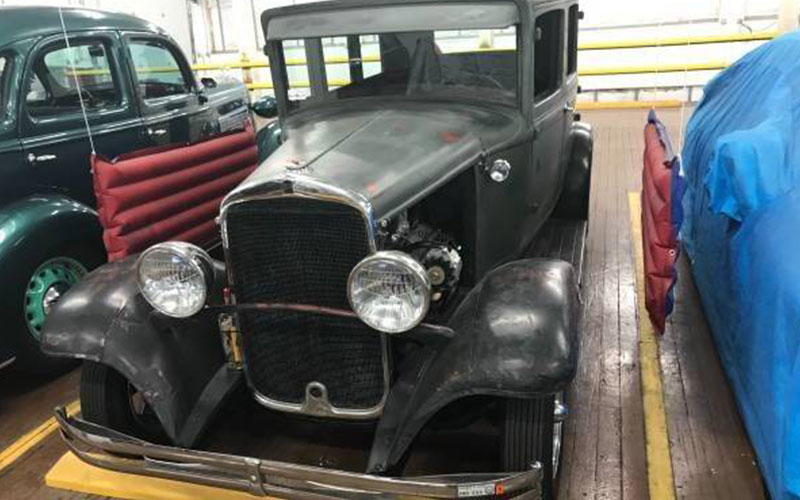What Happened to the DeSoto Car Company?
DeSoto car owners fondly remember their airfoil headlights and cool tailfins. Find out what exactly caused the end of this Chrysler-run brand in the 1960s.Claim to Fame

It took just a year for DeSoto to break sales records in 1929, selling over 80,000 units. 33 years later, on November 30, 1960, the brand ended and became a permanent fixture on the list of defunct car companies.
A rollercoaster ride of successes and failures during those 33 years, DeSoto certainly made a mark.
The Beginning
The brand was created because of another car company: Dodge. After John and Horace Dodge died months apart in 1920 of the Spanish flu, Walter P. Chrysler was looking to make a purchase. He had one problem: Dillon, Read & Company, a Boston investment bank, was running Dodge for the Dodge brothers’ widows. Chrysler and the investment bank negotiated on a purchase, but they hit a standstill.
With the intention of going head-to-head against Dodge (and other companies like Oldsmobile, Willys and Studebaker), Chrysler created DeSoto.
Named after Spanish explorer Hernando de Soto, who led the first European expedition into what is now Florida, Georgia and Alabama, the Desoto was priced lower than Dodge and just above Plymouth at $845.

The first 1929 model rolled out of the factory on August 4, 1928.
The same year that the first DeSoto car was released to the public, Chrysler successfully purchased Dodge Brothers Company from Dillion, Read & Company.
The 1930s

Maybe it wasn’t a good sign that Chrysler was now producing competing vehicles under the same company (giving them at least two mid-priced makes), but it didn’t stop DeSoto’s early success. In fact, sales were good even in the early 1930s, the start of The Great Depression.
They hit a bump in the road because of Chrysler’s 1934 Airflow though. The DeSoto was given the Airflow body, but with a shorter wheelbase. Chrysler marketed the Airflow as the ‘Car of Tomorrow’ but at a time of uncertainty, the buying public weren’t eager to take a chance on that. DeSoto sales were around 14,000 in 1934.
The 1940s

Still, DeSoto recovered from that (after some ups and downs in the late 30s) with the 1942 model which introduced pop-up Airfoil headlights. The ’42 was the first mass-produced vehicle with a feature like that. DeSoto also offered concealed running boards for the first time along with personalized interiors and a 115hp engine.
Production was halted in 1942 due to World War II, so when they were able to resume production in 1946, DeSoto reissued their 1942 models as 1946 models, this time without the hidden headlight.
The 1950s

The 1950s is where DeSoto seemed to really hit their stride in terms of design with the popular Adventurer, Firesweep, Firedome, and Fireflite. The ’52 Firedome featured DeSoto’s first-ever V-8 churning out 160 hp.
The big change in the ’56 models was tailfins with tri-tower taillamps being added later. Thanks to models like the Firesweep, sales jumped by 7,000 in 1957, but the Recession of 1958 turned any of that success upside down, hurting all mid-priced makes. 1958 sales were 60% less than the year before. 1959 sales didn’t recover from that hit.
The 1960s

By the time the ’61 models were introduced in 1960, rumors of DeSoto’s demise were already spreading. Failing sales didn’t help. Chrysler was busy reviving the Newport and continued their focus on the Imperial.
Adding to that, DeSoto’s product line was limited to just one model, the DeSoto, with two body styles: a two-door and a four-door hardtop.
After initially refuting the rumors, Chrysler confirmed the end of DeSoto on November 18, 1960.
Chrysler actually ramped up their production of the DeSoto to use up millions of dollars of DeSoto parts before the last vehicle came off the line on November 30, 1960 (47 days after 1961 models were introduced).
DeSoto trucks?

Despite 33 years of production, DeSoto fell victim to a mix of marketing mistakes, economic downturns and a competitive market.
That wasn’t actually the end of DeSoto name, however.

Chrysler helped found a manufacturing company called Aksam, and began producing DeSoto, Dodge and Fargo hauling trucks in 1964. These were badge-engineered trucks that were intended for foreign markets like Argentina, Spain, Turkey, Australia, Mexico and the United Kingdom.
Even though Chrysler ended its truck operations in international markets in 1970, the DeSoto nameplate continued to be used on trucks made by Askam in Turkey. Those trucks were never sold in America.











My Grandfather always owned DeSoto until their demise, his last carvwas a 64 Dodge 880, plane Jane 361 2bbl, pb auto. My dad had to talk him into getting the am radio. Light gold, half hubcaps.i drove it in the mid 70s.
At age 18, my buddy Drew and I decided to drive to Fla. from Ma. Drew’s father who had passed, left him a two-toned pink 1956 Desoto.
The trip while quite eventful was made wonderful due to the comfortable, smooth ride of my first Hemi experience.
Cars had personality in the days past, unlike the cars of today. You need to be an electronics engineer to drive a today car. Not fun for us elderly folks who remember when…..
So, what am I really saying? Life was much better in the slow lane and we got to smell the flowers along the way……. Glad I was around to enjoy the world when it really made sense.. 👋🍸🕺🏻